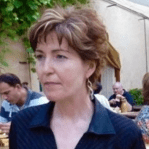Communities living in Northern Ghana face complex environmental circumstances due to a lack of livelihood options, which leaves them mainly reliant on natural resources to generate income.
The aridity of the landscape forces some people to encroach on new areas to plant crops in fields that offer greater access to water. Others need to travel ever greater distances to find fodder for their cattle or to hunt animals. Some people earn a living by collecting shea nuts, while others cut valuable trees down to produce charcoal, one of the most lucrative businesses in the region.
These activities can trigger conflict over land-use and hinder conservation efforts in the area. But brighter possibilities also exist, as communities recognize the importance of keeping nature intact, according to Eric Bayala, a researcher working on his Ph.D. with the project Collaborating to Operationalize Landscape Approaches for Nature, Development and Sustainability (COLANDS), led by the Center for International Forestry Research and World Agroforestry (CIFOR-ICRAF).
Many people also want to learn the art of dry-season agriculture. “They want to have field training, equipment to get better yield and wider market for their product,” said Bayala, basing his comments on interviews he conducted with local communities, state institutions, non-governmental organizations and private companies in Northern Ghana earlier this year. “Many are also willing to learn other skills to earn a living without exploiting the forests.”
One of the keys to solving this longstanding issue is to diversify livelihood opportunities for the communities involved.
“A landscape cannot feed everyone,” said Houria Djoudi, a senior scientist at CIFOR-ICRAF. “We need to figure out how many people can live from the landscape and how many people will have other opportunities based on other assets and not specifically dependent on natural resources.”
To find solutions, scientists meet with various stakeholders and help identify opportunities to implement the integrated landscape approach, which tries to balance competing demands and integrate policies for multiple land uses within a given area. They work under the COLANDS project—a five-year initiative, now at its midpoint, involving innovative research related to landscapes, including forestry and other productive processes.
Listen to the discussion with Bayala and Djoudi on the latest episode of Let’s Talk Trees.
We want you to share Forests News content, which is licensed under Creative Commons Attribution-NonCommercial-ShareAlike 4.0 International (CC BY-NC-SA 4.0). This means you are free to redistribute our material for non-commercial purposes. All we ask is that you give Forests News appropriate credit and link to the original Forests News content, indicate if changes were made, and distribute your contributions under the same Creative Commons license. You must notify Forests News if you repost, reprint or reuse our materials by contacting forestsnews@cifor-icraf.org.













